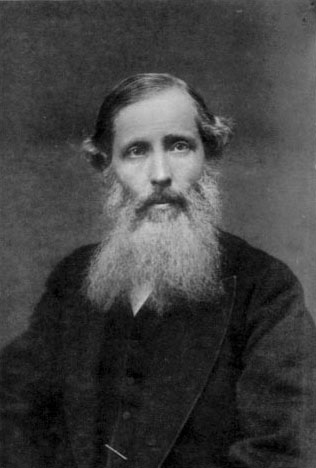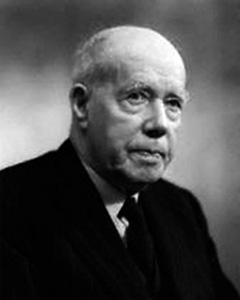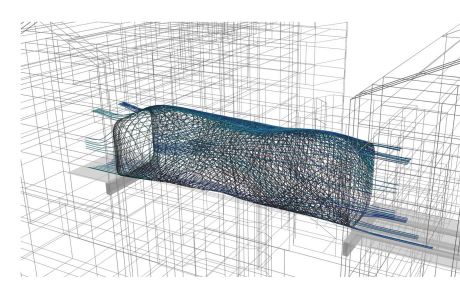How ought political philosophy to proceed in the contemporary moment? What methods should it employ? What can, or ought, it hope to achieve? In his Politics and the Search for the Common Good, Hans Sluga offers a provocative take on these questions. Sluga sets out to problematize the dominant tradition in political philosophy – what he calls the “normative tradition in political philosophy.” The need for such a problematization stems not only from that traditions inadequacies in general, but from ‘the flux, perhaps crisis, and even possibly peril’ that afflicts our politics today: ‘in our changing circumstances, [political] analysis and criticism may have to be invented anew’. In its place, Sluga offers a radically alternative vision of what political philosophy is.
Philosophy, for Sluga, is more craft than science; it is ‘an art of questioning’. Political philosophy, then, is most primordially a kind of questioning about the political. But, for Sluga, the question ‘what is the political?’ lacks a straightforward answer. The political is a ‘family resemblance notion’ and thus ‘resists being pinned down.’ Nevertheless, Sluga thinks ‘the political’ might be ‘usefully conceived’ as ‘a search for the common good’. That is not to say that the idea of a ‘search for the common good’ gives us the essence of the political; it is merely to suggest that such a search ‘is a distinctive and particularly illuminating component within the assemblage we know as politics”.
With this emphasis, Sluga intentionally departs from the Rawlsian view that political philosophy is most fundamentally concerned with the issue of social justice. Justice, for Sluga, is important; but it is one good among many, and perhaps not even the most fundamental. Sluga toys with the idea that ‘flourishing’ is a most accurate end of politics. This thought brings him closer to Aristotle and the perfectionist tradition then to Rawls, but even here his suggestion is not quite Aristotlean. For Sluga resists the idea that it is primary aim of political philosophy to arrive at timeless answers to questions about normative matters. That idea belongs to the ‘normative conception’ of politics Sluga aims to question.
Rather, politics, for Sluga, is a search for the common good in the sense that it is a ‘continuous process of determining our goals’ –or, one might say, conceptions of the good. Indeed, it could be nothing else, given the ‘contingency of our political existence’. With this thought, Sluga situates his approach of politics as a ‘diagnostic form of political thought’ which ‘seeks to advance a more modest form of political philosophy’. Diagnostic thought shuns grand principles; instead it offers a more on-the-ground approach to politics, one more historical in its outlook and more cautious in its practical conclusions.
Sluga’s book is an attempt to ‘map a genealogy of the diagnostic enterprise’—a sort of diagnostic approach to the diagnostic enterprise itself— in order to better understand its achievements, power, promising, and shortcomings. He begins (Ch. 1-2) with a ‘critique of the normative tradition, followed by a genealogy of the diagnostic approach (3-7) which focuses on key thinkers: Marx, Nietzsche, Schmitt, Arendt, and Foucault. The last two chapters (8-9) assess the promise and limitations of the diagnostic approach.
In this post, though, I focus on Sluga’s critique of ‘the normative tradition,’ expressed most forcefully in the first chapter. The critique makes up only half of the chapter as a whole, as in the second half Sluga outlines his own diagnostic approach. My account of Sluga’s critique will be more critical than usual, and I will note out several points at which one might contest Sluga’s view.
Characterizing the Normative Tradition
Before outlining his own conception of political theory as diagnostic practice, Sluga argues that ‘much stands in the way’ of seeing matters aright. The prime culprits, for Sluga, are ‘the normative theory’ and ‘political naturalism’ (this chapter treats the former; the next takes on the later).
The normative tradition in philosophy, according to Sluga, holds that (1) political action should be understood as the application of general norms and, (2) these norms have an abstract, philosophical justification. Sluga’s description seems plausible, but one could question both aspects of this characterization.
Take (1) first. It is not clear whether Sluga understands the claim as a descriptive one, as a claim about method, or as a claim about how political action ought to be. In the first case, political philosophers need not understand real-world political action as the application of general norms. In fact, many don’t. Political philosophers can acknowledge the kinds of power dynamics and struggles that characterize actual politics, without thereby giving up the thought that norms are important. Norms can play some important role in politics, without being determinative of it. That’s hardly deniable. Suppose the claim is meant to be a normative one: political philosophers ought to treat politics as the application of norms. That claim is more contestable, at least if meant exclusively. Or, if the claim is meant to be a normative one, political philosophers could acknowledge that real political actors often fail to live up to the ideal.
(2) seems harder to disagree with, but it is very vague. Whether the claim is true depends on what Sluga thinks and ‘abstract, philosophical justification’ is. One sort of justification political philosophers give is that their preferred norms best approximate our considered judgments, once we bring them together and make them coherent. But this justification is not necessarily so abstract. At the very least, it is not, or is not intended to be, fully independent of the practices and beliefs of actual political actors.
Letting these issues pass, Sluga aims to challenge both of these presuppositions. But first, he suggests three motivations for why philosophers might seek such an understanding of politics: the separation of the a priori from the empirical and the idea of general norms as what philosophers can distinctively contribute to politics are two such ideas. Sluga also suggests, at a deeper level, that the normative conception remains attractive as a response to the uncertainty about actual politics.
Sluga’s critique is twofold. He aims to question (1) how theorists get from political reality to abstract norms; that is, how they derive or justify norms, and (2) how theorists get from abstract ideal theory to political reality; that is, how they apply norms. Call (1) the justification problem and (2) the application problem.
Political Judgment
Sluga takes the justification problem first. The initial step in his argument is to offer a characterization of actual political judgments, for ‘day-to-day politics is rarely concerned with abstract formulas’. Rather, ‘practical political judgments’ are, in actual practice, of two sorts: verdicts and assessments. Verdicts and assessments often go together (such complex judgments Sluga calls assessed verdicts).
Verdicts takes the form: I (we) intend to (shall, should, will, must, want to) do (not do) x here and now in order to bring about y. In short, verdicts concern action. They have two important features. First, they are always context bound: they are made in particular circumstances, and they apply in the first place only to these. Second, they are personal in character: they are about what I or we should do. Given these particular features, verdicts are not universal judgments, but have much more localized character: they are judgments about how particular agents or communities should act in a particular set of circumstances.
Verdicts are determinations to act, not justifications for actions. They are for this reason usually accompanied by assessments. Assessments are action-guiding judgments in the weak sense that they express or convey a positive or negative view of a situation (Sluga seems to characterize them in a quasi-expressivist manner). They have the form ‘I judge that P here and now’. Again, assessments are made from a personal standpoint, not from an objective point of view. In many circumstances, assessments are highly tentative and uncertain; usually, they are open for reassessment and revision. Again, given the tentative nature of assessments, and their personal nature, they are far from the standard sort of normative judgments political philosophers look for.
Before turning to Sluga’s critique, let us assess where we have come so far. In order for Sluga’s critique of the abstract-normative project to get off the ground, Sluga needs a certain characterization of how political judgment works in practice. His suggestion is that, in practice, we commonly make ‘assessed verdicts,’ which contain references to person and context. One could hardly dispute that this is sometimes or even often the case; one can however question whether this is always, or even primarily the case.
Take the constitutution of the United States, or the Declaration of Independence. These are obviously political documents. Sluga makes some remarks about the historical context here: the constitution, for him, was a sort of political project; its enactment was immediately followed by disagreement about the meaning of the text. Undoubtedly, these things are true. But, nevertheless, the text and its public role seem to contain some special kinds of judgments about liberty and equality. “All men are created equal” is not an assessed verdict, but a completely general norm. Granted, we may contest what this means; but almost everyone agrees to some relevantly similar specification of it. At the very least, Sluga would have to admit that such norms are part of our practice of political judgment, even if they are not its main part. At minimum, then, Sluga must admit that assessed verdicts do not exhaust political judgment.
One question one could then ask, just about the kind of judgments found in the constitution, is what role such norms play. A natural thought is that there is a reason general prescriptions about liberty and equality are found in foundational documents of this kind. Here, a certain Rawlsian line of thought seems attractive: the idea that all persons are moral equals is not just one political judgment among others, on the same par as, say, what the state of Alabama should do about its budget issues. Rather, such judgments play a special role in our public political culture: they form the framework within which other assessments are made. They are, in a word, considered judgments; ones which we are not prepared to revise easily.
Now, such judgments might seem the exception: not all our political judgments have the sort of default status that judgments about basic human equality do. But, even so, there are other judgments that seem to have a similar character. “Slavery is wrong” is an example: anyone who disagrees with that, one might be tempted to say, is not worth taking seriously as a political interlocutor. But, Sluga might say, this again is a special case. And he might be right.
Even if only a few judgments have this special status, others seem also not to fit the descriptions Sluga gives of assessments and verdicts. Moving from the restrictive context of a constitution, let us turn to the case of an actual social conflict: the debate over whether abortion should be permitted. If we follow Sluga’s account, would be inclined to think that the kinds of judgments commonly made in this context involve reference to a person or a context. But this hardly seems to be the case: when a pro-life protester says, “Abortion is wrong,” the judgment should be taken at face value. The claim is not someone in particular judges that abortion is wrong and that judgment binds no one. Nor is it that abortion is only wrong in some context. The claim is simply that abortion is wrong, period, always. The common reply —that women have a ‘right’ to choose—commonly means that all women have a right to choose, regardless of context.
It is easy to multiply such examples. Just think of how advocates on either side of most serious political issues tend to take about them. This is not to deny that some political judgments are verdicts or assessments in Sluga’s sense. Many are. But how many is an open question.
The issue I have been pressing is whether Sluga’s account of practical political judgments is accurate or exhaustive. I have been suggesting that, at best, his account covers only some cases of political judgment, and these are not necessarily the most important ones. Given Sluga’s other commitments, he is unlikely to reply that his account is supposed to give the essence of political judgment (political judgment is a family resemblance term); the most he could do is try to counter the descriptive accuracy of the characterizations I have given.
But, the issue of descriptive accuracy is then central, given Sluga’s next move. The question Sluga presses next is this: how do we move from context-bound, personal, local political judgments to general, context-free, impersonal norms? Such a move is unexplained and, Sluga contends, inexplicable. But, note that if I am right that at least some of our ordinary political judgments are already general and context-free, then the problem becomes much more surmountable: we don’t need to move from one sort of judgment to the next because many of our judgments are already universal in nature. Let us, however, set the issue aside.
Against Normative Theory 1 — The Justification Problem
Sluga notes two difficulties in moving from assessed verdicts to general norms.
First, how do we move from a particular political judgment (I judge X to be just here and now, given a certain context) to a general norm (the principles of justice are; or such and such is just)? Is it not possible, Sluga asks, that our judgments might be so diverse or specific that no such generalization is possible, or that any generalization would be an empty formula? Possible it is; but that is hardly an argument.
More argumentatively, in moving from the specific to the general, Sluga notes that the political philosopher has to use our ordinary terms: justice, fairness, good, and the like. Sluga suggests, however, that the meanings of such terms are contested. We therefore cannot move in any self-evident manner from their ordinary use to a general normative conclusion.
This is only part of an argument, however. No political philosopher would deny that matters of justice are deeply contested. But, they might say that Sluga’s characterization of exactly what is contested about them is limited.
One move that is open here to the normative theorist is to draw on Rawls’ concept/conception distinction. The concept of justice – giving each their due, and treating one another fairly –is hardly contested; the issue is which conception of justice provides a substantive way of making sense of the problem posed by the concept justice. The problem is to find a standpoint from which such matters can be fairly assessed (Rawls’ original position is one example of what such a standpoint might look like). The issue then is whether there is enough accord, or whether enough accord could be brought about by reasoning together, to settle on a description of such a standpoint, by drawing on the political judgments we do share. The Rawlsian conjecture is that there is. Of course, whether Rawls pulls this off is a different question.
In any case, though, the fact of actual disagreement should not be taken as definitive against the normative theorist. People disagree about a great many thing: whether global warming is real, whether the sun revolves around the earth, or visa versa, etc. In none of these cases does disagreement undermine objectivity. However, Sluga’s argument seems to depend on the claim that disagreement undermines the possibility of deriving general norms. It is at the very least not obvious why this should be so.
Sluga concludes this line of thought raising some doubts about whether disagreements can be resolved by appeal to abstract norms. These doubts are fair. One might be skeptical that philosophical arguments can have the appropriate effects on real agents. But whether the argument will convince someone in a practical context is different from whether that argument is convincing or sound.
Let us turn to the second problem Sluga raises. The problem is this: how can the normative theorist move from claims which have only local and contextual validity to claims that have universal and objective validity? Again, note that a premise of the argument is that are ordinary judgments are ‘never categorical’ in nature. That premise, I have argued, is dubious. But setting the issue aside, there is a real question here.
Sluga insists on two points in his discussion: first, that agreeing on abstract norms is often not necessary for reaching political agreement, and second, that the agreements we do reach are political agreements, not outside the realm of politics. Both of these claims are certainly true. But no political philosopher should disagree with them. Political philosophy is part of society’s political culture. Political philosophers are not experts, but participants in that culture. In a democratic society, conceptions of justice offered by philosophers are part of politics, even if they are a very abstract part (for this sort of conception of political philosophy, see the introduction to Rawls’ Lectures on the History of Political Philosophy)
There is a further question here Sluga does not press, but is related: namely, whether political values or conceptions of justice are in some self relative or dependent on political communities’ actual practices of valuing. That is a matter of debate in political philosophy. But note that, even if they are, certain quite abstract norms might still be put forward.
In short, Sluga raises important challenges to the possibility of normative political philosophy. But, I have suggested, his argument are at the very least not decisive.
Against Normative Theory 2 — The Application Problem
Let us suppose that that the political theorists’ attempt to derive and justify general norms succeeds. What relevance to such norms have for political practice? Political philosophers, Sluga argues, do not pay enough attention to what ‘application’ of general norms entails, and how it is supposed to be pulled off. Sluga makes two arguments against the possibility of applying norms to practice.
The first argument is Wittgensteinian, or at least Sluga intends it to be. There is no sense in which norms are universal apart from their application, for the generality of a statement consists in the use we make of it. Thus, the norm and its application are not separable from each other. It follows that, in order to grasp the general norm, we need to no what use to make of it.
How good is this argument? I think: not very. For the normative theorist has a ready response. It might be right that we cannot imagine a norm without a possible use, but we can imagine a norm which applies to or governs an ideal society. Imagining such a society and what principles ought to regulate it is a way of imagining such a use.
Take an example. In A Theory of Justice, Rawls stipulates some assumptions which describe the society for which his principles of justice will be chosen. The society contains certain kinds of persons; it exists under conditions of moderate scarcity, and one can enter only through birth and exit only through death, etc. Imagining such a society, we give the abstract norms of justice a use. Such norms are abstract, not in the sense that they have an ‘abstract use’, but rather that they apply in the first instance to a society imagined according to certain idealizing assumptions.
Now, Sluga might press the question: why might we want such norms? There are several reasons. (One of) Rawls’ own stated justification(s) is that “beginning with ideal theory…provides…the only basis for the systematic grasp of these more pressing problems” (8). That seems plausible.
But, there is another answer one might offer, one Sluga might be more likely to accept: ideal theories provide a useful model for comparison, and as such can shed light on justice in our own society. By picking out certain features, and bracketing others, we can reduce the complexity of the political and make it surveryable. Reasoning in this way can help is analogously by serving as an object of comparison. Of course, one should be careful not to confuse the ideal society with the real one. But, done carefully, the approach seems fruitful.
This kind of conception seems to fit with what Sluga says elsewhere, in a paper entitled “Beyond ‘the New’ Wittgenstein”. There, Sluga notes, that in trying to make sense of the social world:
we do not simply grope our way blindly; we make maps for ourselves, crude and incomplete as they are; we draw simple, schematic pictures; we create elementary scenarios of speech and action (“language games”) to illustrate how we go about things’ we construct models in signs, figures words or material bits….These devices prove indispensable to us but we are forece to recognize that they also often mislead us because of their crudeness, their simplicity. We use them analogically, comparing the relations between parts of the model to relations between parts of reality; the question is always how far the analogy goes.
Later he adds:
There are two things our models can do for us. We can use them to orient ourselves in an unsurveyable domain but we can also use them for reconstructing such a domain, for making it surveryable. We can thus speak of a cognitive and of a normative function of the model
My suggestion is that one can think of ideal theory in much the same way: an attempt via an object of comparison (an ideal society) to make our own surveyable.
Sluga then suggests that the application of a rule requires regularity, and politics is characterized by constant flux. But to conclude from this that general norms have no application is a fallacy. One must, of course, determine what the circumstances are at any given time, before making a political decision. That is why non-ideal theory is essential. But, the fact that matters are constantly changing in way undermines the enterprise; it only complicates it. Political philosophy is an on-going process; but it can reach provision conclusions.
Sluga then argues that, even where some normality obtains, there is a problem of getting from a norm to a verdict or assessment. Norms don’t specify situations, whereas assessments do. Sluga suggests the deductive model is misleading, for two reasons. First, from the judgment “If A is the case, do C” it does not follow that “if A and B are the case, do C”. Surely this is correct. But thinking about what to do if A is the case is not necessarily unhelpful, given some account of B. B might be morally irrelevant, or it might change the verdict. That just means one has to rethink the matter, taking into account B (making B part of the idealization involved, for example). The most this suggests is that there is no straight path from ideal to non-ideal theory.
Finally, Sluga notes that politics is the art of the possible, and there are difficulties in knowing what to do in complex situations with many injustices. This all is all true. But, the normative political philosopher would reply, that identifying those injustices in the first place requires some normative grasp of the situation.
Sluga concludes by admitting that there is ‘no decisive argument’ against the normative political theorist. This is surely right: as Sluga notes, a proof of impossibility is difficult. The best argument, Sluga suggests, might consist of showing that an alternative view deals better with real politics. In the remainder of the chapter, he outlines a diagnostic approach to political philosophy, and explores its promise and perils in the remainder of the book. In the next post, I will explore Sluga’s initial characterization of diagnostic practice.
However, it is useful to conclude by making some final observations:
(1) Sluga’s account of practical political judgments seems unduly narrow. It seems to fit only some of the political judgments we make. But the narrow view is essential to his argument.
(2) In pressing his criticisms, Sluga fails to distinguish between ideal and nonideal theory. Many of his criticisms of abstraction seem to apply much more readily to ideal theory than to nonideal approaches.
(3) Sluga’s consideration of how normative theory might be relevant seems unduly narrow, given what he says elsewhere. It is not the case that the only way norms from ideal theory can be relevant is by applying directly to nonideal situations. Rather, such ideal theories might serve as objects of comparison that help us sharpen our judgment in nonideal cases.
(4) Finally, none of this amount to a substantive refutation of Sluga argument—there is much he could say in response. Nor is it to suggest that Sluga’s own diagnostic approach is not appealing (as I will suggest in my next post, I am highly sympathetic to Sluga’s approach). Rather, it simply strikes me that Sluga’s arguments are not, in their current form, definitive against the normative tradition.









